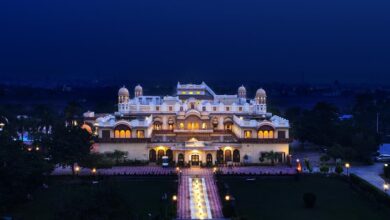Yunnan’s UNESCO Treasures: Preserving the Rich Heritage of the Region

Introduction
Yunnan, a province in southwestern China, is a treasure trove of cultural and natural wonders. Nestled amidst picturesque landscapes, Yunnan boasts a diverse heritage that has earned it recognition from UNESCO (United Nations Educational, Scientific and Cultural Organization). This article delves into the UNESCO treasures of Yunnan, exploring the rich tapestry of history, culture, and nature that makes this region truly exceptional.
Lijiang Ancient Town: A Timeless Haven
One of Yunnan’s crown jewels is the Lijiang Ancient Town, a UNESCO World Heritage Site that transports visitors back in time. With its cobbled streets, traditional Naxi architecture, and intricate waterways, Lijiang is a living testament to the region’s rich cultural history. The town’s preservation efforts have earned it acclaim for safeguarding the legacy of the Naxi people, an ethnic group with a unique yunnan script and religious practices.
Three Parallel Rivers of Yunnan Protected Areas: Nature’s Grand Symphony
Yunnan’s natural wonders are not to be outshone, as evidenced by the designation of the Three Parallel Rivers of Yunnan Protected Areas as a UNESCO World Heritage Site. This region is where the Jinsha, Lancang, and Nujiang rivers run parallel, creating a breathtaking landscape of deep gorges and towering mountains. The ecological significance of this area cannot be overstated, as it harbors diverse flora and fauna, including many endangered species. Yunnan’s commitment to preserving this natural grandeur is a testament to the importance of environmental conservation.
The Old Town of Lijiang: A Harmony of Cultures
In addition to Lijiang Ancient Town, Yunnan boasts another UNESCO-listed gem – the Old Town of Lijiang. This cultural marvel is a crossroads of ethnic diversity, where the Bai, Tibetan, and Han people coexist. The architectural styles of the old town reflect this rich blend, featuring elements from various cultures. Strolling through its labyrinthine streets, visitors can witness the harmonious integration of traditions and customs, offering a glimpse into Yunnan’s multicultural heritage.
Hani Rice Terraces: A Marvel of Agricultural Ingenuity
Yunnan’s UNESCO treasures extend to the breathtaking landscapes shaped by the Hani people. The Hani Rice Terraces, known as “Yuanyang,” exemplify centuries-old agricultural practices that have transformed the hills into a mesmerizing mosaic of rice paddies. These terraces not only showcase the Hani people’s engineering skills but also highlight their sustainable farming methods, a living testament to the harmonious coexistence between humans and nature.
Protecting Shangri-La: Diqing’s Unique Heritage
Nestled in the northern reaches of Yunnan, Diqing Tibetan Autonomous Prefecture is home to the fabled Shangri-La, a place of pristine beauty and cultural significance. The Old Town of Dukezong, with its ancient streets and Tibetan architecture, is a UNESCO-listed site that reflects the unique heritage of the region. Diqing’s commitment to preserving its cultural and natural assets aligns with the ideals of sustainable tourism, ensuring that future generations can continue to experience the allure of Shangri-La.
Conclusion: Yunnan’s Enduring Legacy
Yunnan’s UNESCO treasures represent a harmonious blend of cultural diversity and natural splendor. From the ancient streets of Lijiang to the vast Hani Rice Terraces, each site tells a unique story of human ingenuity and the deep connection between communities and their environment. Yunnan’s commitment to preserving its heritage not only safeguards these treasures for future generations but also provides a model for sustainable development that respects both cultural traditions and the natural world. As Yunnan continues to flourish as a beacon of cultural and ecological preservation, it stands as a testament to the enduring legacy of this enchanting region.





